At the market of Osnabrück is probably the most important building of the city, the city hall Osnabrück. Close to it stands the current registry office (former scales house) and St. Mary’s Church.
Osnabrück City Hall – under the sign of the Peace of Westphalia
The landmark of the city of Osnabrück is the historic town hall, a place steeped in history, where important peace negotiations took place during the negotiations of the Peace of Westphalia. You can visit the Osnabrück City Hall free of charge.
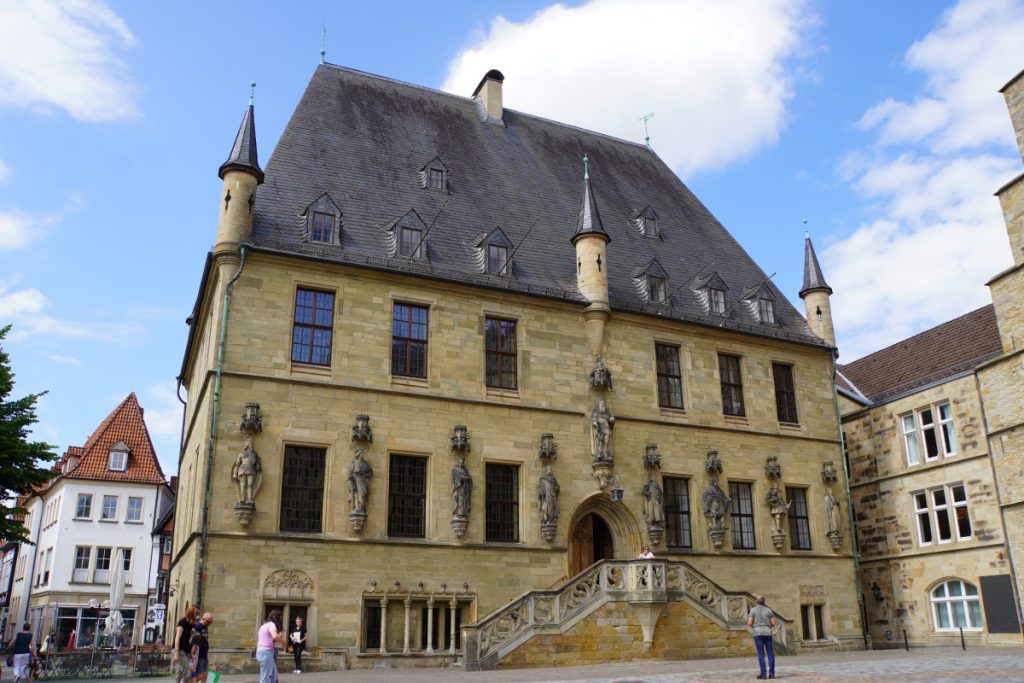
In the 15th century, the council of the Hanseatic city in Osnabrück commissioned the construction of a new town hall on the market square. In 1575, all interior and exterior work was completed.
The result was an impressive town hall built in the late Gothic style. From the base plate to the eaves, the building measures a stately 18 meters. The attached hipped roof is another 18 meters high. Six small towers make the building look a bit like a fortress.
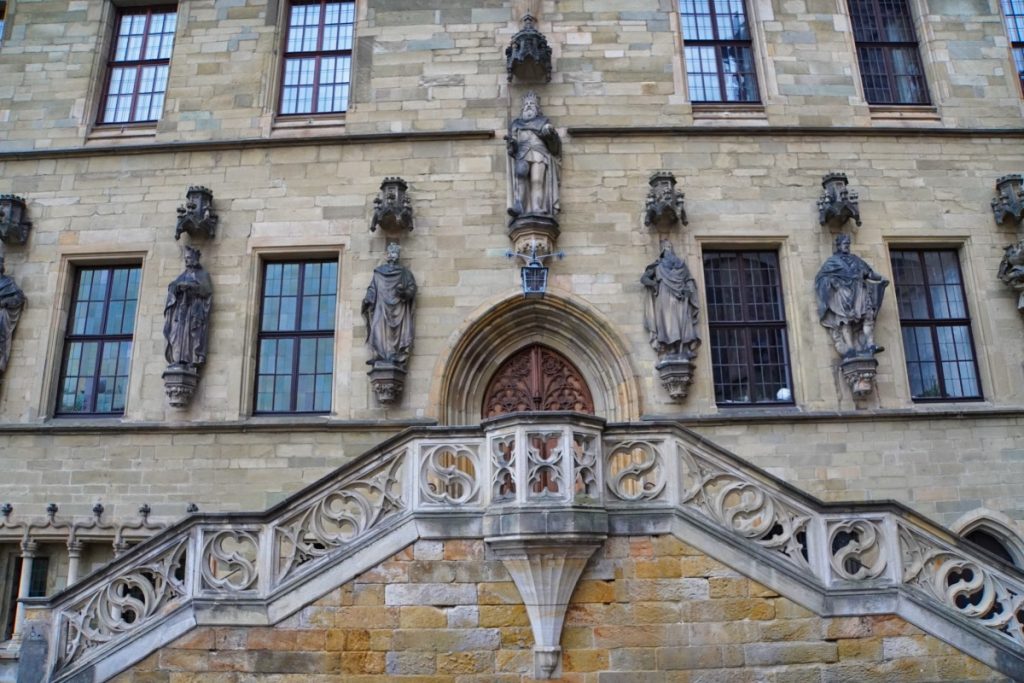
If you want to enter the town hall, you have to go up a large flight of steps, which was added in front of the building in 1846. Previously, one entered the building via a retractable wooden staircase. The entrance door is a good 500 years old and the handle is particularly beautiful. A dove, as a symbol of peace, and the year 1648 remind us of the great event that once took place here.
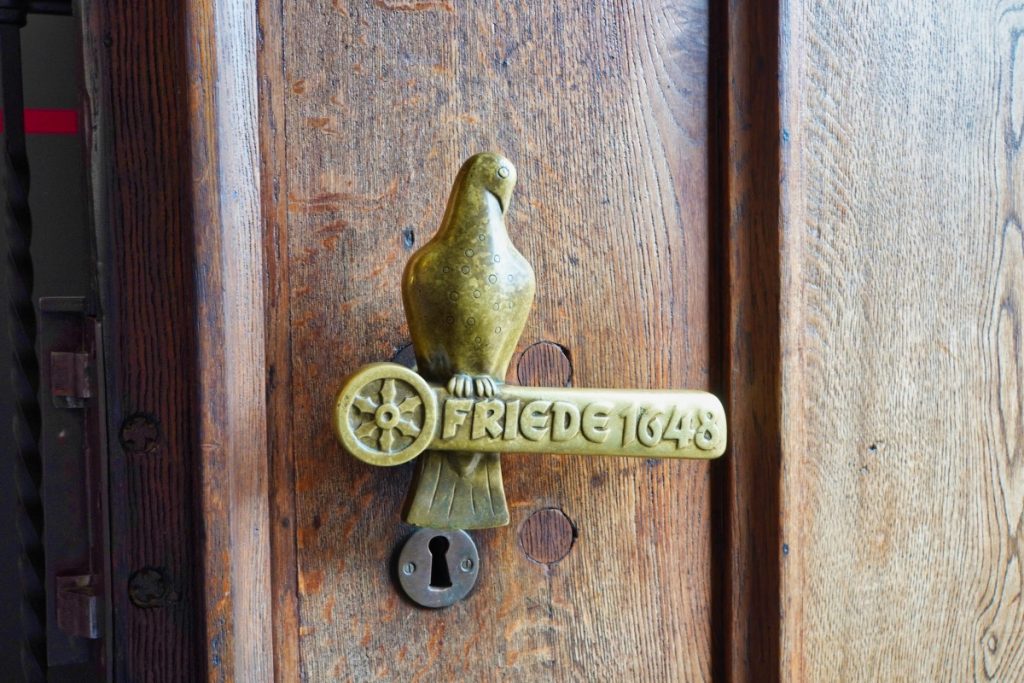
I find the statues that adorn the main facade of the town hall impressive. In the center above the door stands Charlemagne, who is considered the founder of the city. To his right and left are other German emperors: Sigismund, Frederick II, Rudolf of Habsburg, William I, Frederick I Barbarossa, Arnulf, Maximilian I and Ludwig the Bavarian.
What happened in the city hall
In the last years of the Thirty Years’ War, the town hall in Osnabrück, with the nearby town hall in Münster, was the venue for the war’s peace negotiations.
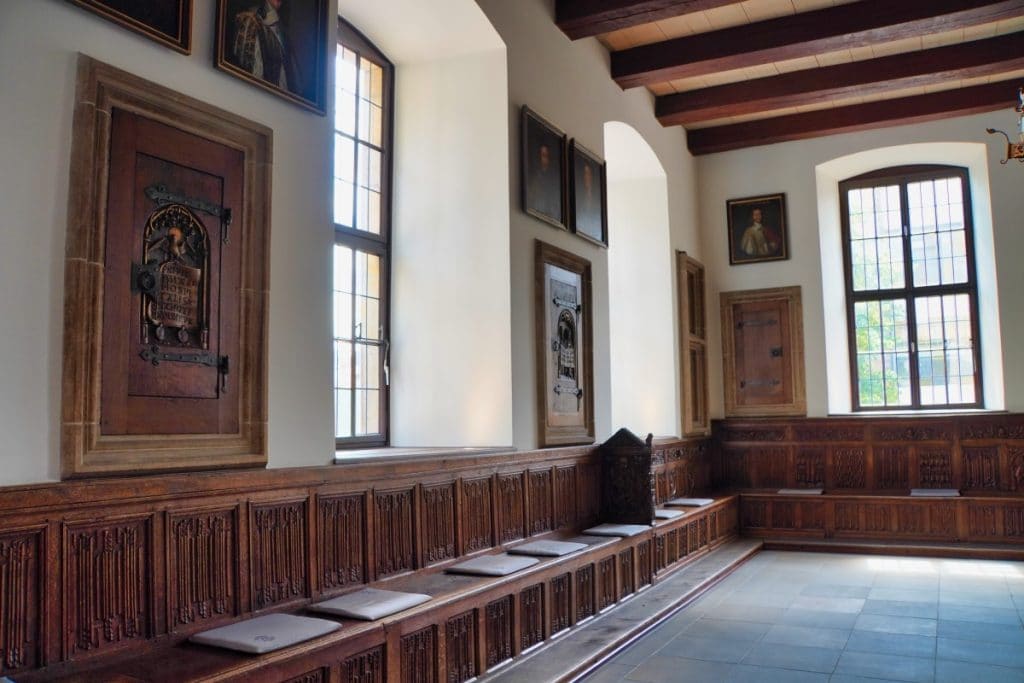
Between 1643 and 1648, part of the delegates of the warring parties met in the town hall hall, now called the Peace Hall. While the imperial envoys and the French negotiated in Münster, the envoys of the Kingdom of Sweden and the envoys of the emperor and the imperial estates were gathered in Osnabrück. Today, the pictures of the 42 European envoys to the Peace Congress hanging in the Peace Hall and the portraits of the rulers of the warring parties at the time – Queen Christina of Sweden, King Louis XIV of France, and Emperor Ferdinand III of Germany – serve as reminders of the peace process.
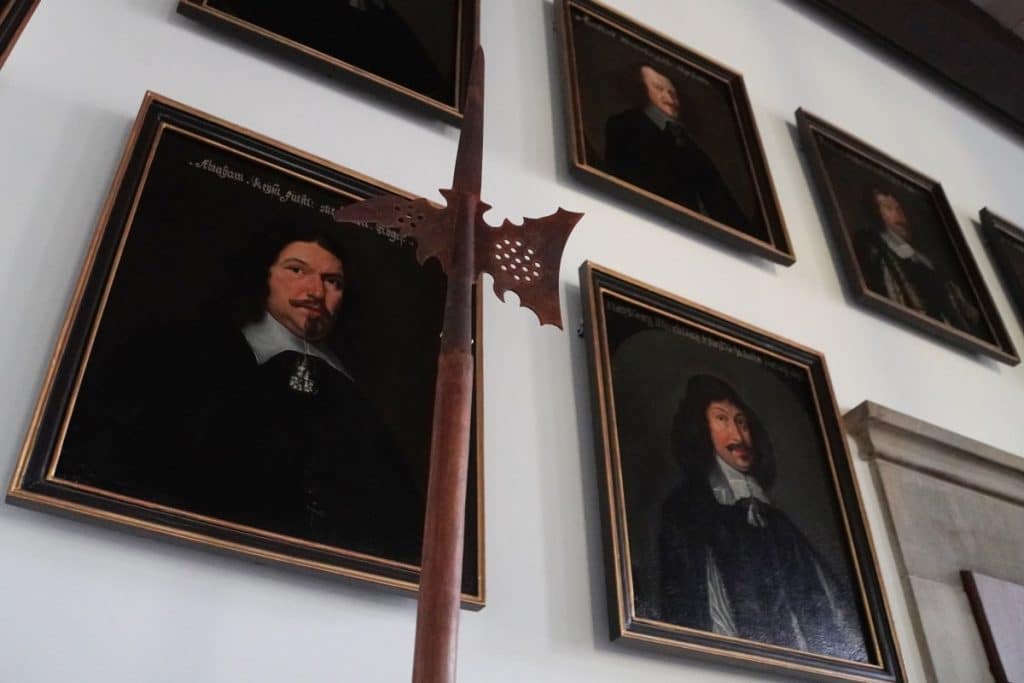
If you look at them more closely, you will clearly see the external similarities of the individual persons. The pictures were created after the negotiations and there were no “models” of the people. So simple citizens sat model and their optics was adapted something from the memory.
The Peace Hall can be visited free of charge during opening hours. I was particularly impressed by the benches on the walls of the room and the large chandelier in the center of the room. This was the only major source of light in the hall, through the colorful windows fell only quite little light into the room.

Reconstruction of the town hall
The original appearance of the Osnabrück Peace Hall was changed in 1846 and 1880, when it was rebuilt. At the beginning of the 20th century, the alterations were reversed and today the hall can be admired in its original state.
During bombing raids in World War II, the town hall was badly damaged and burned down. Fortunately, almost all of the historic furnishings had been brought to safety beforehand. In October 1948, in time for the 300th anniversary of the Peace of Westphalia, the restored town hall could be used again.
What else can you see in the city hall?
Opposite the Peace Hall, you can enter (also free of charge) through a vault-like door to the City Council Treasury. Here you can see, for example, the council silver, coins and the Emperor’s Cup. I find a replica of the Westphalian peace treaty particularly interesting.
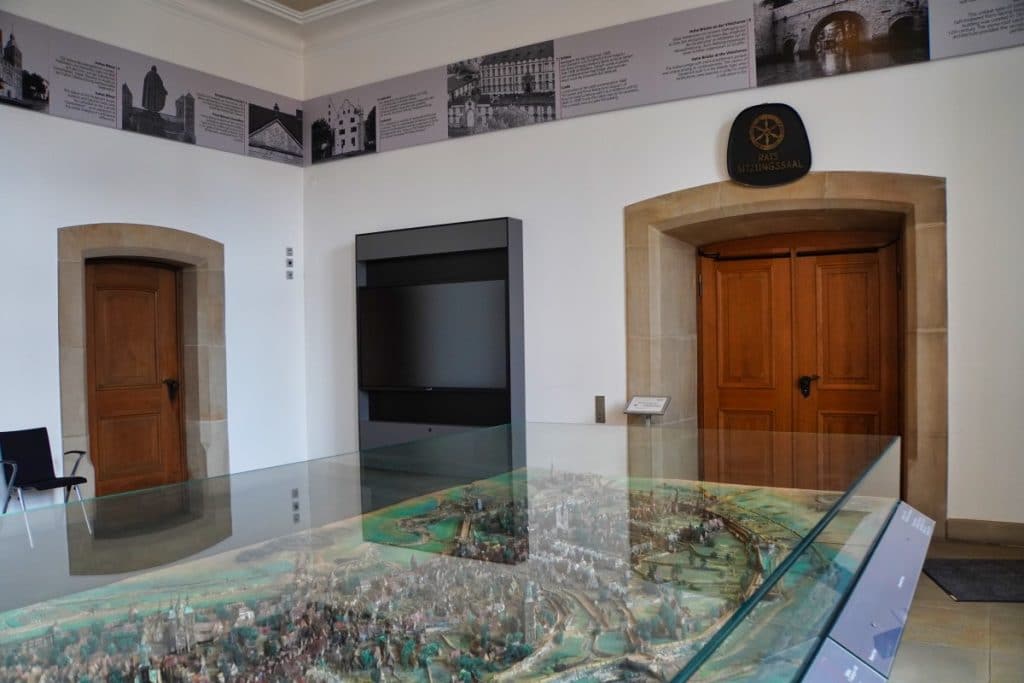
On the upper floor is a large model of the city. This depicts Osnabrück in the year 1633. This city model can also be visited free of charge.
Address:
Markt 1
49074 Osnabrück
Deutschland
Opening hours:
Monday – Friday: 10 -17 h,
Saturday: 9 – 16 h
Sunday: 10 – 16 h
closed: on public holidays
Admission fee:
free of charge
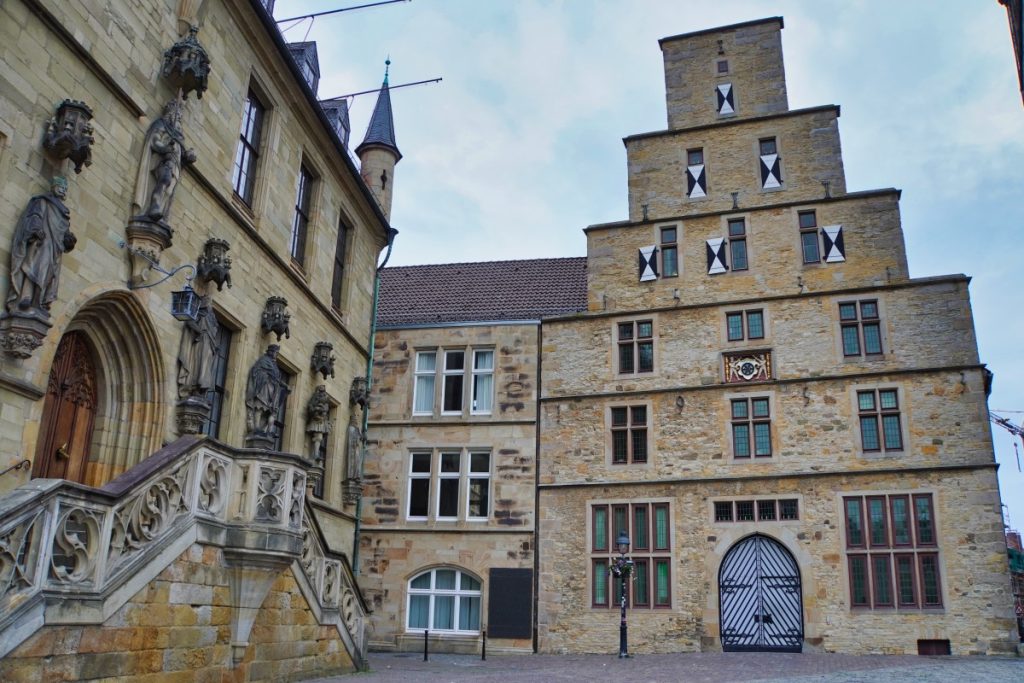
St. Mary’s Church
On the market square of Osnabrück there is a large Gothic hall church. The Marienkirche has a rather high tower, which you can climb at certain times.
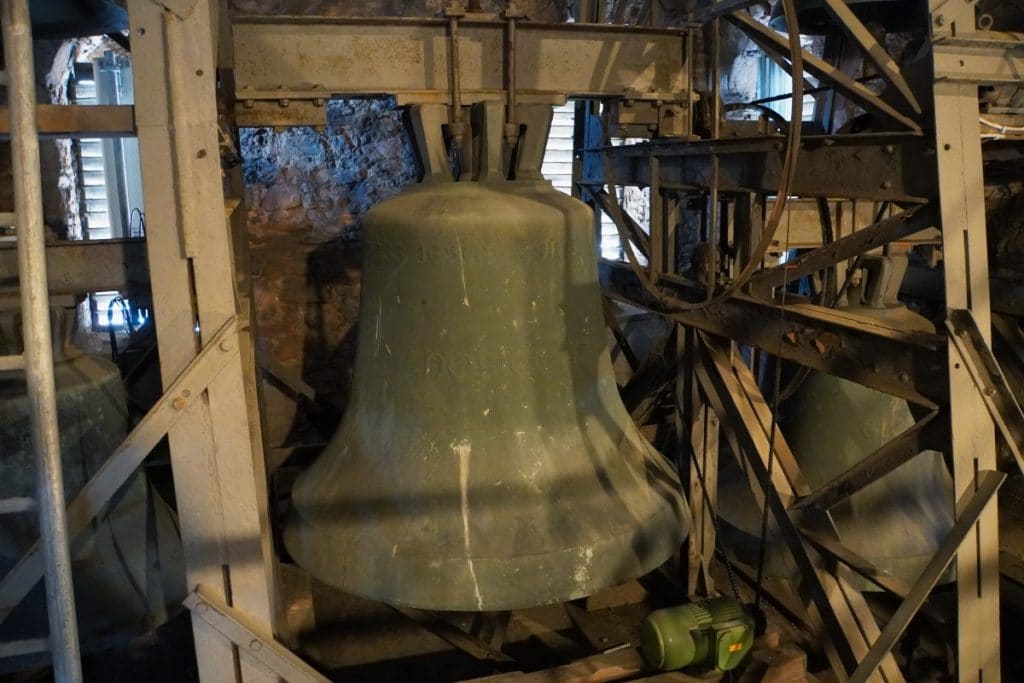
During the ascent you pass the church bells and then reach a viewing platform running around the tower. From there you can enjoy the fantastic view over the city. The view of the town hall is impressive. From this perspective, the size of the hipped roof becomes really clear. The Osnabrück Cathedral can also be discovered very well from the Marienkirche.
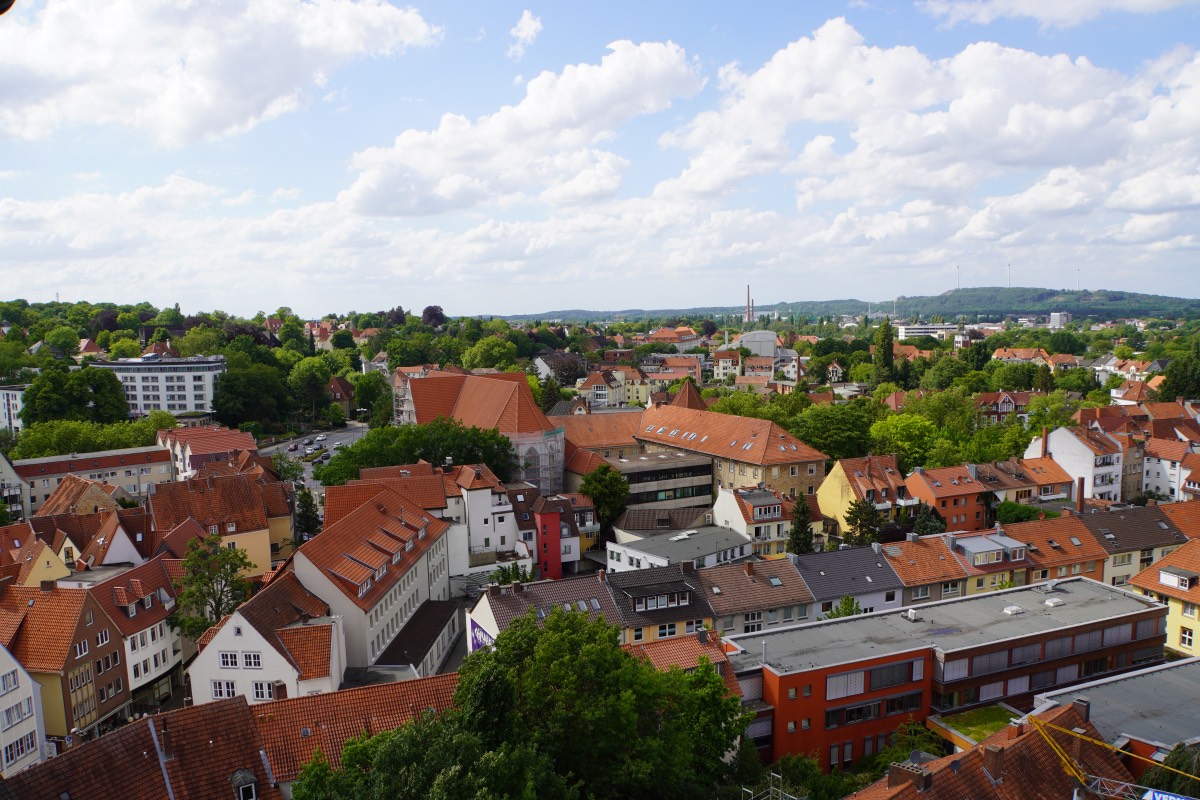
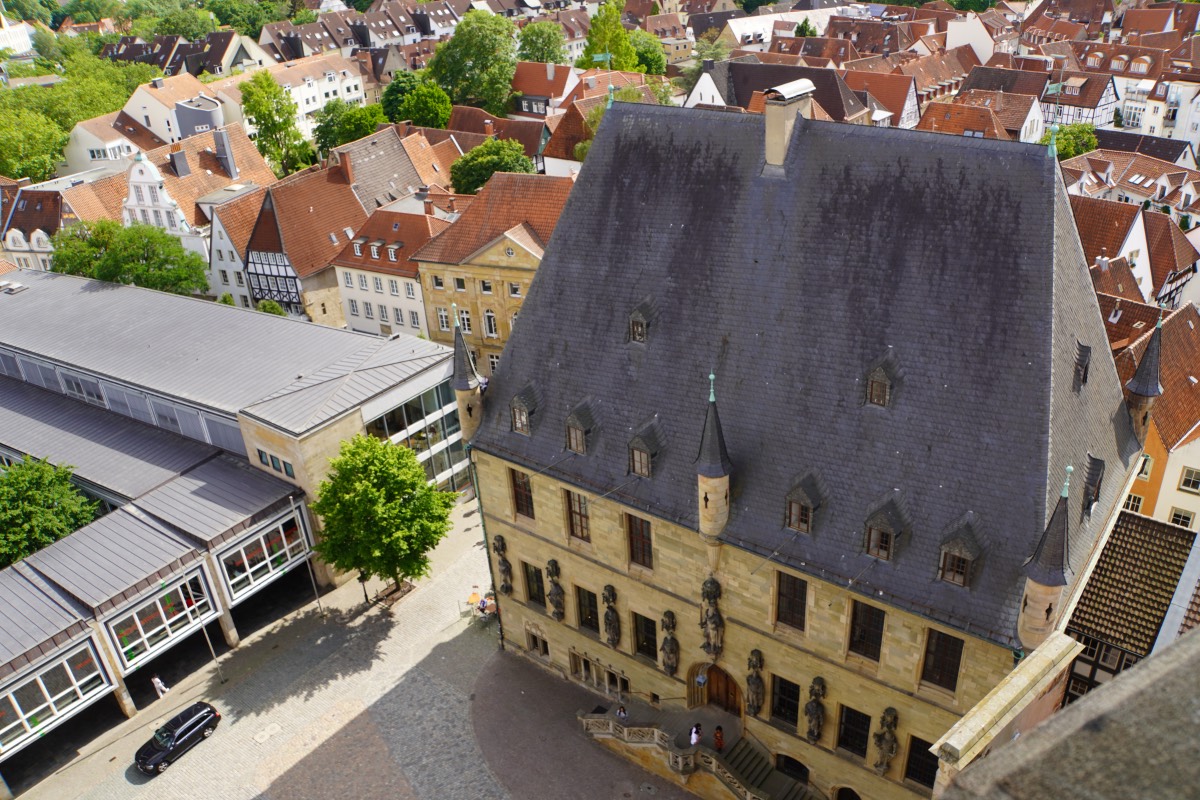
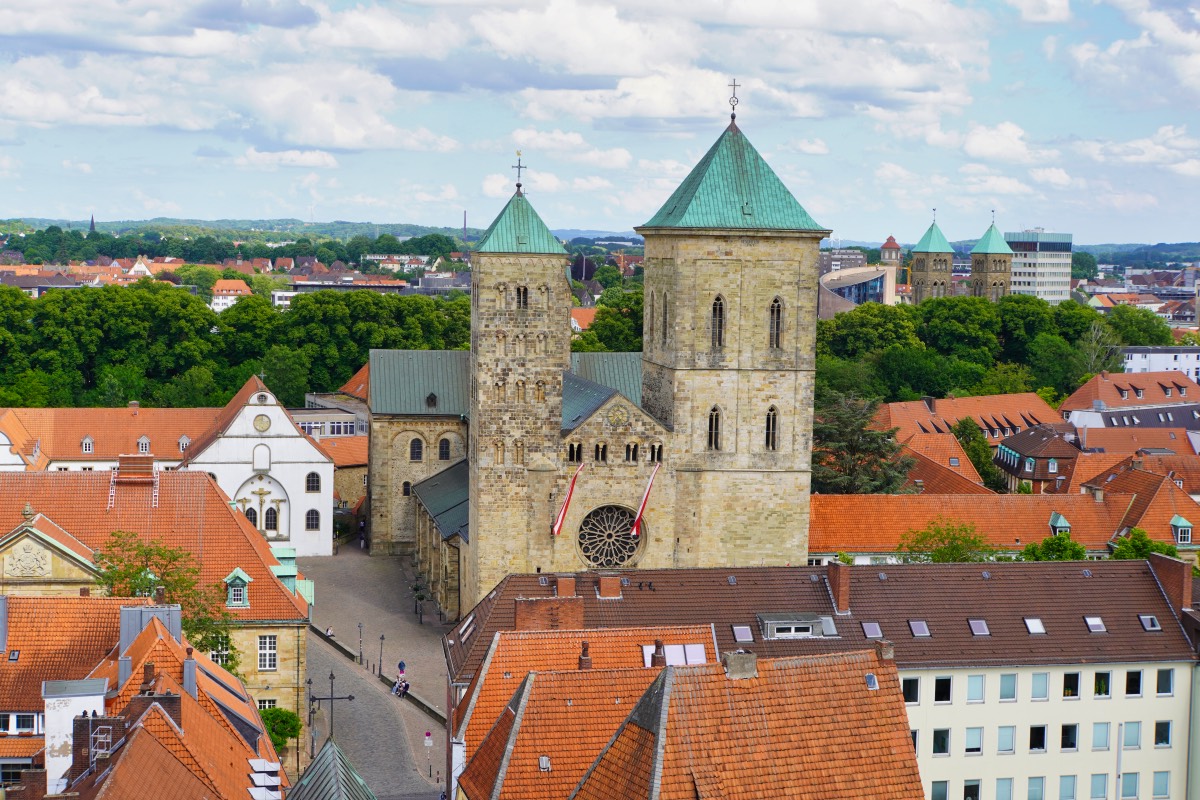
If you want to see more of the church, you can go to the nave during opening hours. Worth seeing are the triumphal cross, the crucifixion group and the passion cycle by Albrecht Dürer.
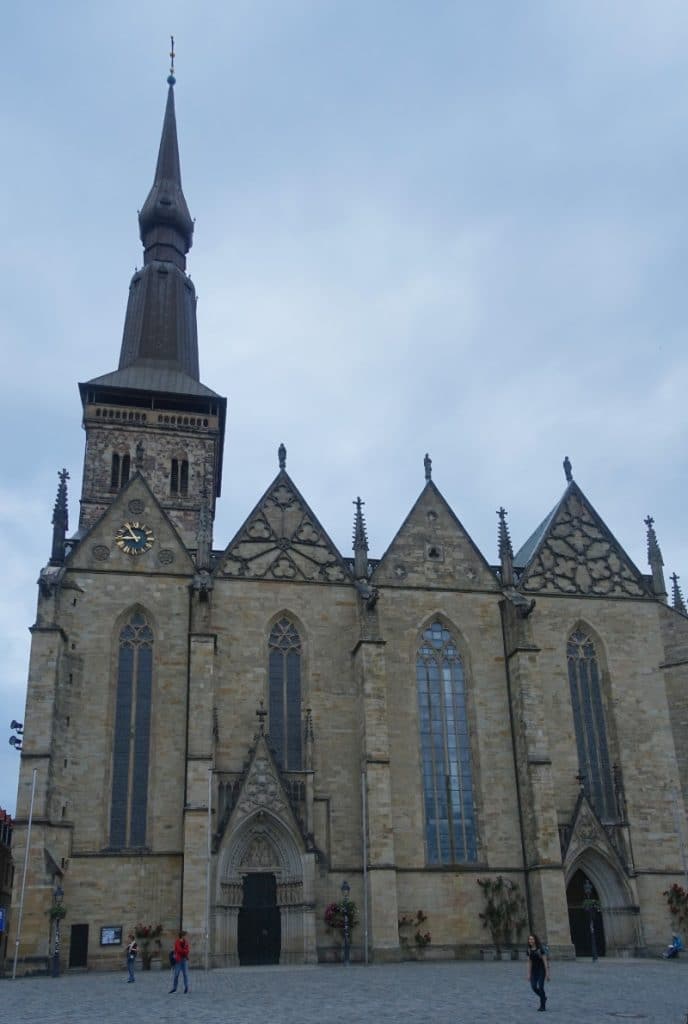
Opening hours:
April – September:
daily: 10 -17 h
October – March:
daily: 10.30 – 16 h
Admission fee:
free of charge
Citizen’s Fountain
The market square is bordered on one side by the modern building of the city library. If you walk through the open passage, you stand on the “Square of the Westphalian Peace”. There stands the most impressive fountain the city has to offer.
Hans Gerd Ruwe created the fountain financed by the citizens of Osnabrück. It was inaugurated in 1985.
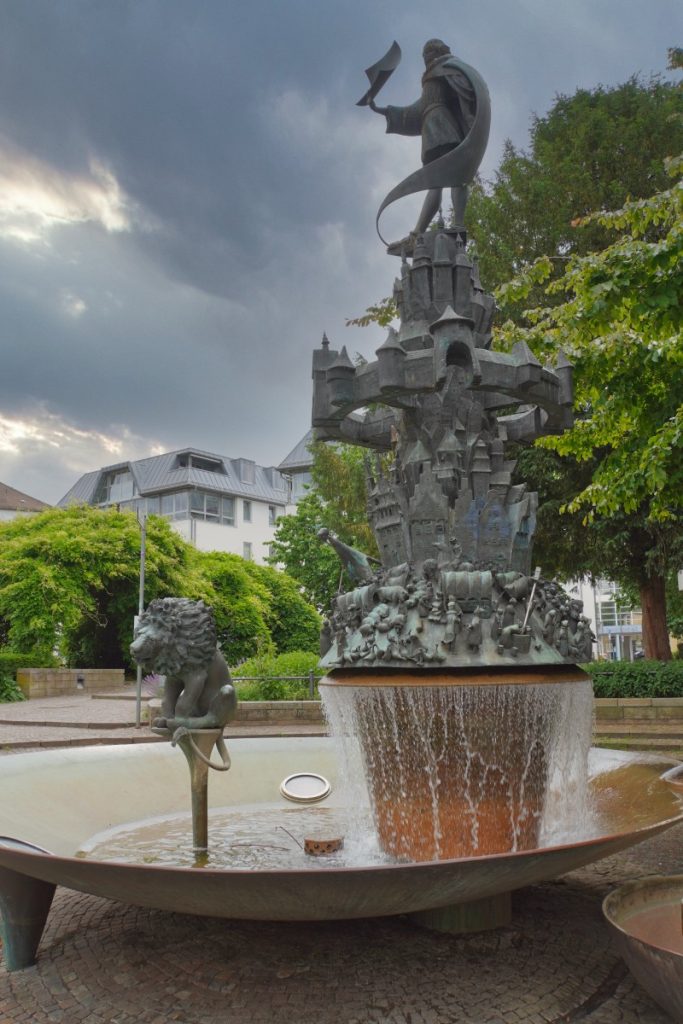
The original plan was to place the fountain in the middle of the market square. In the past, there had always been a fountain there, which was very popular not only for fetching water, but also as a communication meeting point among the citizens.
With the construction of the canal system in the city, the remains of the old fountain were discovered in the market square and it was decided to make them visible. The plan was to rebuild the fountain and shoot it with a lid. This now spoke against the construction of the new fountain on the square. Also the originally planned name market fountain, which the new fountain should have carried, was so no longer possible. It was decided to give the fountain the name Bürgerbrunnen (Citizens’ Fountain), since the citizens had also financed the fountain. The “Square of the Peace of Westphalia” was chosen as the new location.
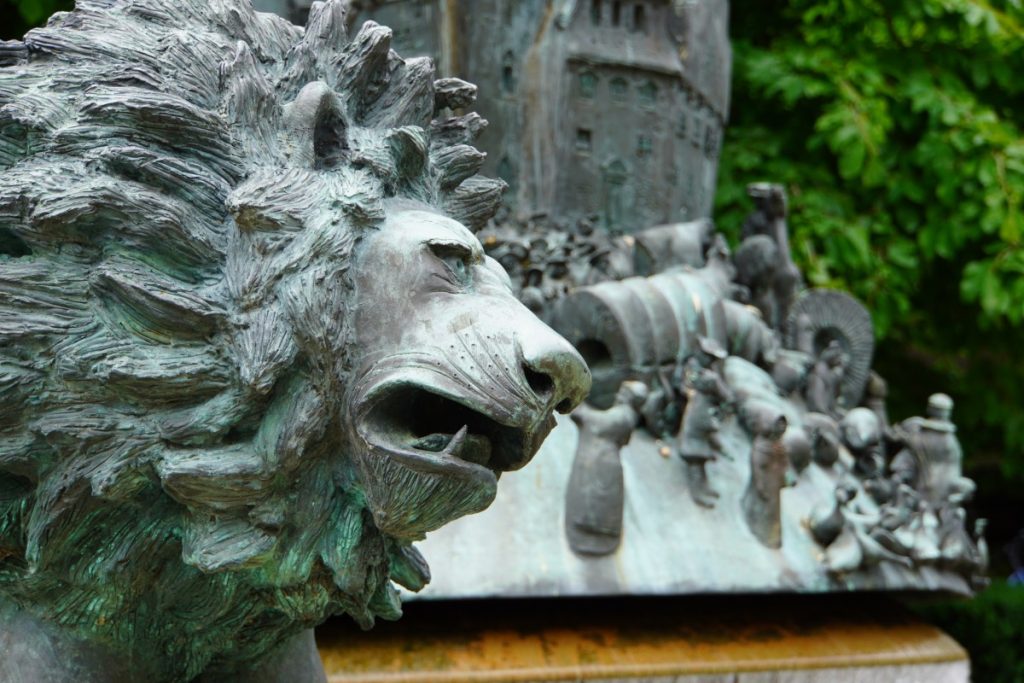
This beautiful fountain should be looked at more closely with a little time. It consists of 1200 individual parts and tells a part of the city’s history.
On the fountain stands Emperor Barbarossa. In his hand he holds the document that granted Osnabrück its city charter. His imperial mantle blows wide open and encloses the city, a symbol of the protection that the emperor wanted to offer the inhabitants.
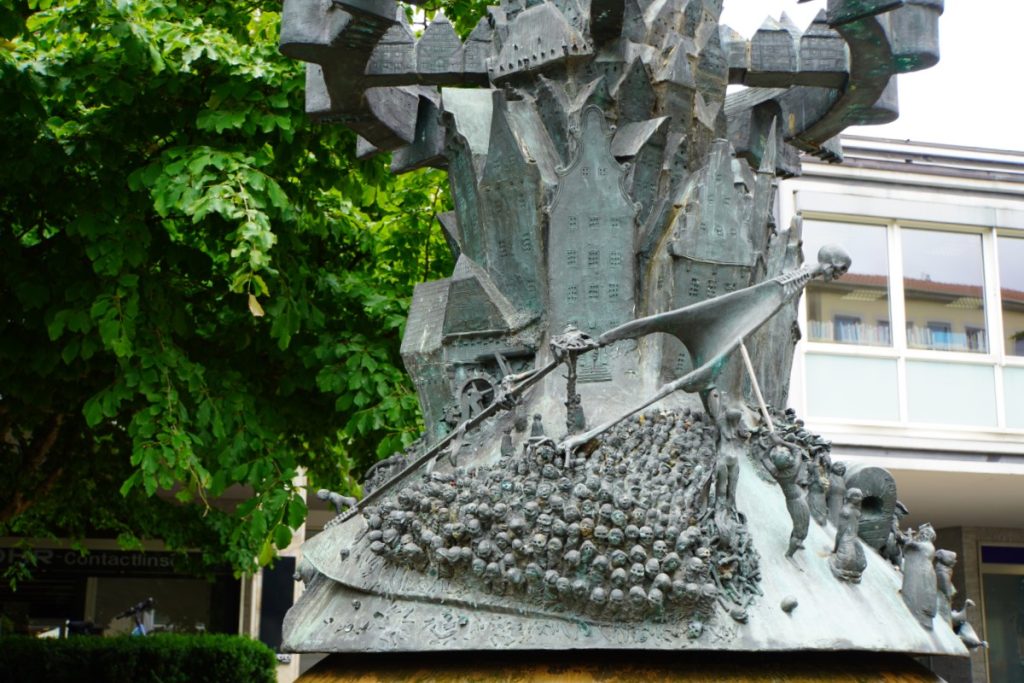
Below the figure of the emperor are depicted the houses of the city and finally many small individual scenes that describe life in the city. Here, the most impressive representation is certainly the figure of Death. This one pulls with the scythe the dead and their souls into the underworld. The image represents the time of the plague in the city.
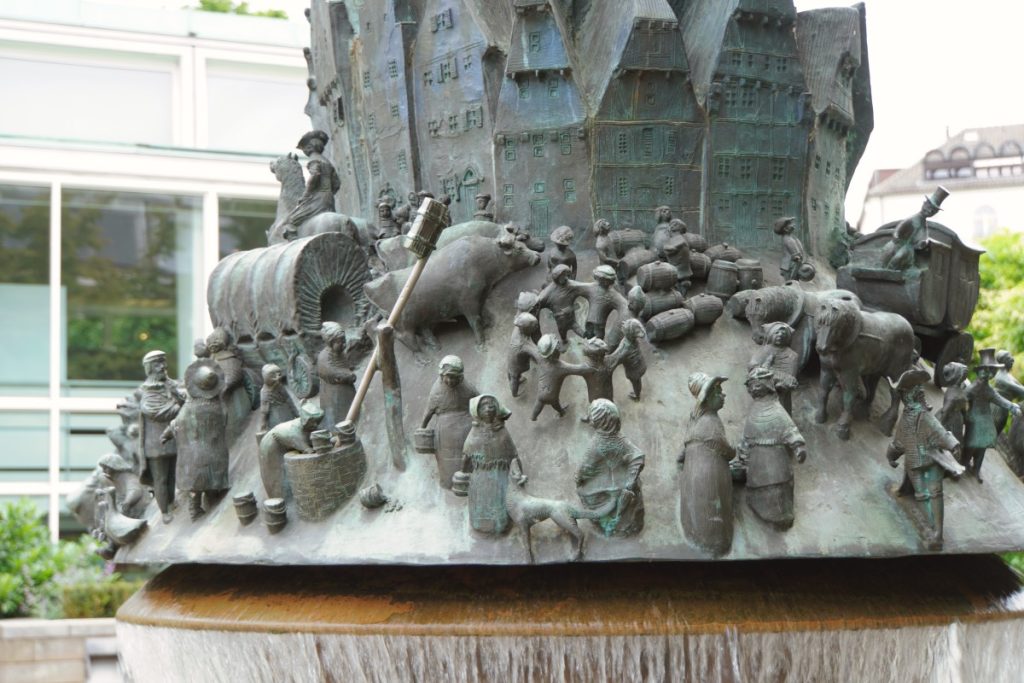
The visit to the town hall and the church tower took place within the framework of a press event.
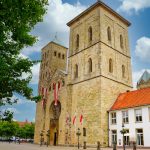

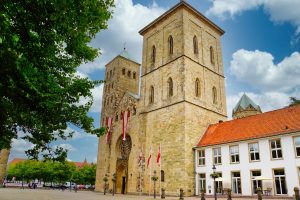
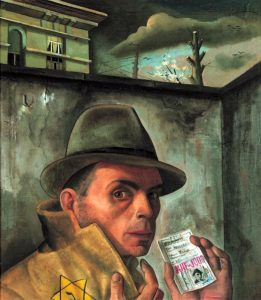
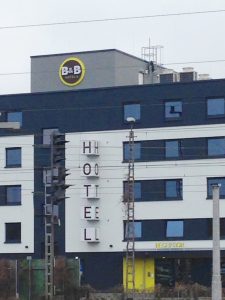
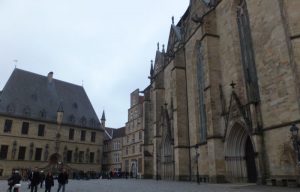
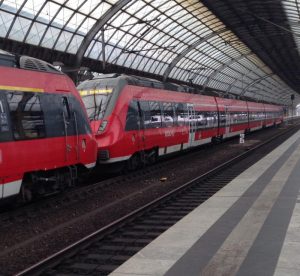
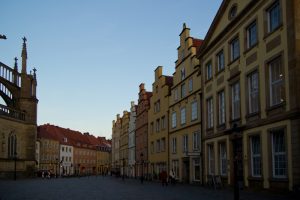
Leave a Reply